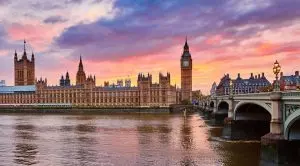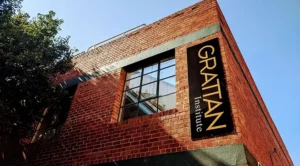 The Church of England has unveiled its intention to start a special parliamentary inquiry into the damage caused to society by the liberalisation of gambling laws which was started under the Labour party more than ten years ago.
The Church of England has unveiled its intention to start a special parliamentary inquiry into the damage caused to society by the liberalisation of gambling laws which was started under the Labour party more than ten years ago.
According to the Church of England, the laxer laws have been one of the main reasons for the gambling “epidemic” which has spread across the UK residents and endangers not only their financial state but also their mental health. In addition, the increased levels of gambling participation and problem gambling threaten to affect more children in case that the country’s regulatory bodies do not take the necessary measures and gambling operators are still able to generate millions by exploiting tax laws.
I am shocked that the Chancellor has delayed the £2 FOBT stake by six months, but welcome the rise in remote gaming duty. In so handing the bookmakers £900m he gives the impression of valuing them and the tax-take more than vulnerable problem gamblers at risk from FOBTs.
— Alan Smith (@BishopStAlbans) October 29, 2018
The Bishop of St Albans, the Right Reverend Alan Smith, who has been one of the most eager anti-gambling campaigners and addresses gambling-related issues for the Church, described the liberalisation of the gambling legislation as “a huge experiment”. He further shared that by demonstrating a favourable attitude towards gambling local regulators makes gambling look normal to a whole generation which has no actual understanding of the possible long-term effects of compulsive gambling behaviour.
My letter alongside other faith group leaders in the @FT calling for the stakes on FOBTs to be reduced as soon as possiblehttps://t.co/eVxk5zJU12 pic.twitter.com/Qo1tx5Zocm
— Alan Smith (@BishopStAlbans) October 24, 2018
At a private meeting held on Wednesday, the Bishop of St Albans revealed that he intends to set up an ad hoc special inquiry aimed at reviewing the impact of the 2005 Gambling Act on society. Should the inquiry be rolled out, it would be carried out under House of Lords rules.
Children’s Gambling Participation Rates Also Rise
 The Gambling Act of 2005 really brought laxer rules for gambling companies to operate. It allowed them to advertise on radio and television, and also lifted the ban on UK-based providers which offer and advertise online gambling to local players. In addition, the 2005 Gambling Act broadened the range of gambling products that can be offered on the territory of the UK.
The Gambling Act of 2005 really brought laxer rules for gambling companies to operate. It allowed them to advertise on radio and television, and also lifted the ban on UK-based providers which offer and advertise online gambling to local players. In addition, the 2005 Gambling Act broadened the range of gambling products that can be offered on the territory of the UK.
At the meeting, the Rt Rev Smith, who was supported by some senior peers from all parties, explained that the inquiry would investigate the cost of gambling addicts’ treatment to the National Health Service (NHS). According to reports, that cost amounts to about £1.2 billion.
Based on data provided by the UK Gambling Commission (UKGC), there are currently at least 430,000 problem gamblers in the country. Only yesterday, the major gambling regulatory body also revealed that there are 55,000 children between the age of 11 and 16 who can be classified as problem gamblers.
Thanks to everyone who supported our campaign to reduce the stake on FOBTs to £2. The govt knows this will reduce harm, yet Treasury is trying to delay its implementation to 2020. Let them know this is unacceptable by signing our letter to the Chancellor https://t.co/VATsU5a2c7
— Fairer Gambling (@fairergambling) September 10, 2018
Another major and widely-discussed concern of local authorities has been gambling advertising. Over the last few years, the number of gambling operators which target viewers of live sports events on TV and online by offering them the so-called “live odds” bets have increased. In addition, gambling companies have also faced allegations of targeting children through their advertising campaigns, in which gambling is depicted as a normal, everyday activity.
Measures have already been taken by UK gambling regulators to tackle problem gambling and its devastating impact on local residents, but the Church of England still insists that a further inquiry is necessary so that the actual scope of “gambling epidemic” is determined.
- Author


